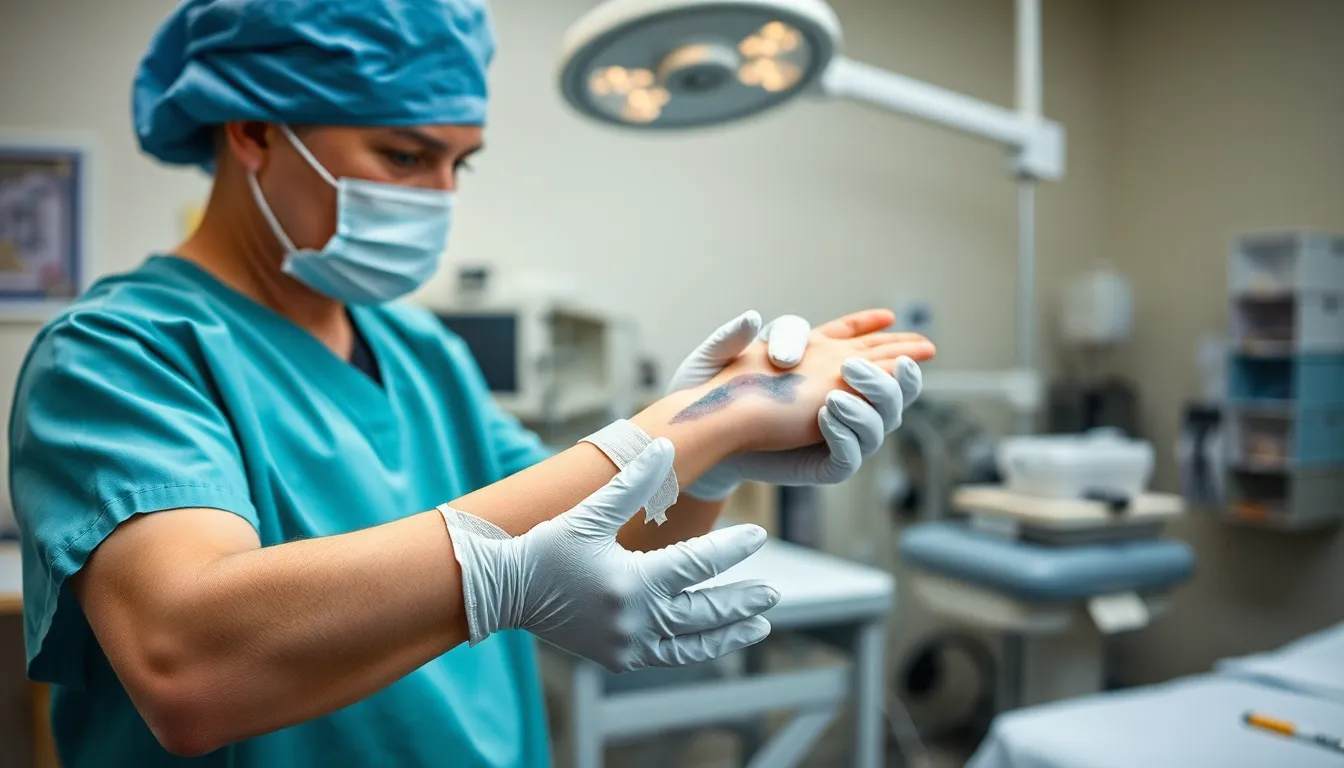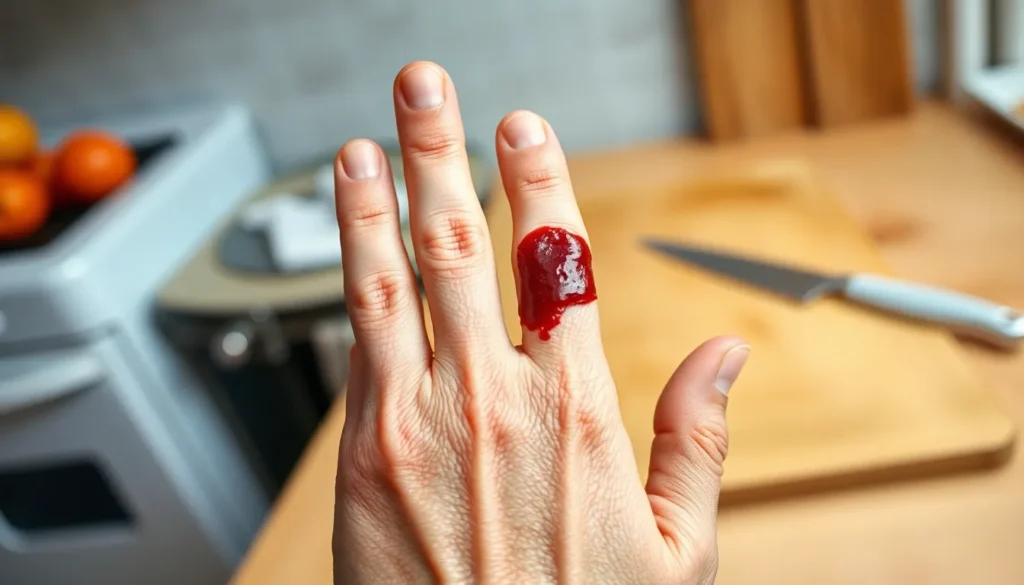Accidents happen, and sometimes they involve sharp objects that seem to have a personal vendetta against our skin. Whether it’s a paper cut that feels like a tiny ninja attack or a kitchen knife that’s gone rogue, these encounters can lead to more than just a few choice words. Understanding the ICD-10 codes for contact with sharp objects isn’t just for medical professionals; it’s crucial for anyone who wants to navigate the wild world of healthcare with a little more ease.
Table of Contents
ToggleOverview of ICD 10 Codes
Understanding ICD-10 codes related to contact with sharp objects is crucial for effective medical billing and treatment. These codes provide an essential framework for healthcare professionals when documenting injuries from sharp items.
Definition of Contact with Sharp Object
Contact with sharp objects refers to injuries sustained from items like knives, scissors, or glass. Such incidents often result in cuts, lacerations, or puncture wounds. The ICD-10 code system categorizes these injuries, allowing healthcare providers to classify them accurately. Code S61.9 represents an unspecified open wound of the hand, while S51.9 applies to other specified open wounds of the forearm. Accurate definitions help medical personnel determine the severity of injuries and ensure proper treatment.
Importance of Accurate Coding
Accurate coding plays a significant role in healthcare management. When injuries from sharp objects are coded correctly, it ensures appropriate treatment and follow-up care. Coding also impacts insurance claims, affecting reimbursements and provider revenue. Accurate data entry helps identify trends in injury patterns, guiding preventative measures. Mistakes in coding can lead to claim denials, delayed care, or improper treatment plans. Understanding these codes enhances patient care quality and optimizes operational efficiency in medical settings.
Common ICD 10 Codes for Sharp Object Injuries

Understanding specific ICD-10 codes for sharp object injuries aids in accurate documentation and treatment. Below are common codes associated with such injuries.
S51 – Open Wound of the Forearm
S51 codes classify injuries related to the forearm. This group includes many specific codes for various types of open wounds. Providers often use S51.8 for other specified open wounds of the forearm. Such detailed classifications enhance communication among healthcare professionals. Accurate coding supports effective treatment plans and seamless billing processes. Providers diagnose these injuries based on symptoms, assessing the depth and severity. Consideration of this code is essential for ensuring proper care.
S61 – Open Wound of the Wrist and Hand
S61 codes pertain to injuries affecting the wrist and hand. These codes include specific entries like S61.9, which covers unspecified open wounds. Medical providers frequently encounter these injuries in clinical settings, making accurate coding crucial. Documentation improves if healthcare professionals understand the nuances of each code. Treatment strategies depend on the exact injury identified with these codes. Knowing the differences among S61 codes allows for targeted care and efficient billing practices. This specificity aids in tracking injury trends for preventative measures in overall healthcare.
Types of Injuries Related to Sharp Objects
Injuries related to sharp objects can range from minor to severe, often requiring medical attention. Understanding these types of injuries assists in proper treatment and documentation.
Puncture Wounds
Puncture wounds occur when sharp objects penetrate the skin. Examples include injuries from nails, needles, or pointed tools. These wounds may not bleed extensively but can lead to infections or deeper tissue damage. Treatment often involves cleaning the wound, administering tetanus shots, and monitoring for signs of infection. Accurate coding with ICD-10, such as S61.111 for a puncture wound of the right index finger, enables proper diagnosis and billing processes.
Lacerations
Lacerations result from cuts or tears in the skin due to sharp objects. Common sources include kitchen knives, broken glass, or metal edges. The severity of lacerations varies, with some deep enough to require stitches or staples. Immediate care focuses on stopping bleeding, cleaning the area, and ensuring no foreign objects remain. The ICD-10 code S61.319 corresponds to an unspecified laceration of the wrist, highlighting the need for precise documentation to facilitate effective treatment and tracking of injury patterns.
Diagnosis and Treatment
Accurate diagnosis and effective treatment of injuries from sharp objects are vital for optimal recovery. Medical professionals utilize a systematic approach to assess these injuries.
Initial Assessment and Diagnosis
Initial assessment focuses on identifying the severity of the injury. Physicians examine the wound site for signs of bleeding, swelling, and damage to surrounding tissues. A thorough medical history is gathered to determine if the patient has any underlying conditions that could affect healing. Diagnostic imaging, such as X-rays, may be employed to rule out foreign objects or fractures in cases of deeper injuries. Accurate coding with ICD-10, such as S61.9 for unspecified open wounds of the hand, plays a crucial role in documenting the injury correctly.
Treatment Approaches for Sharp Object Injuries
Treatment approaches depend on the injury’s type and severity. Minor cuts may require simple cleansing and bandaging, while deeper lacerations might necessitate sutures for proper closure. Tetanus prophylaxis is assessed to prevent infection, especially if the patient has not received a recent booster. Healthcare providers often advise on wound care instructions to minimize complications. In cases where infection or extensive damage occurs, further surgical intervention may be necessary. Emergency care documentation, including relevant ICD-10 codes, ensures effective treatment and follow-up care.
Understanding ICD-10 codes for injuries caused by sharp objects is vital for effective medical care. Accurate coding not only streamlines billing processes but also enhances communication among healthcare providers. By recognizing the specific codes associated with various injuries, medical professionals can ensure proper treatment and documentation.
This knowledge ultimately leads to improved patient outcomes and better tracking of injury trends, which can inform preventative measures. For anyone navigating the healthcare system, familiarity with these codes can simplify interactions and enhance overall care quality. Investing time in learning about ICD-10 codes related to sharp object injuries is a step toward more efficient and effective healthcare delivery.




